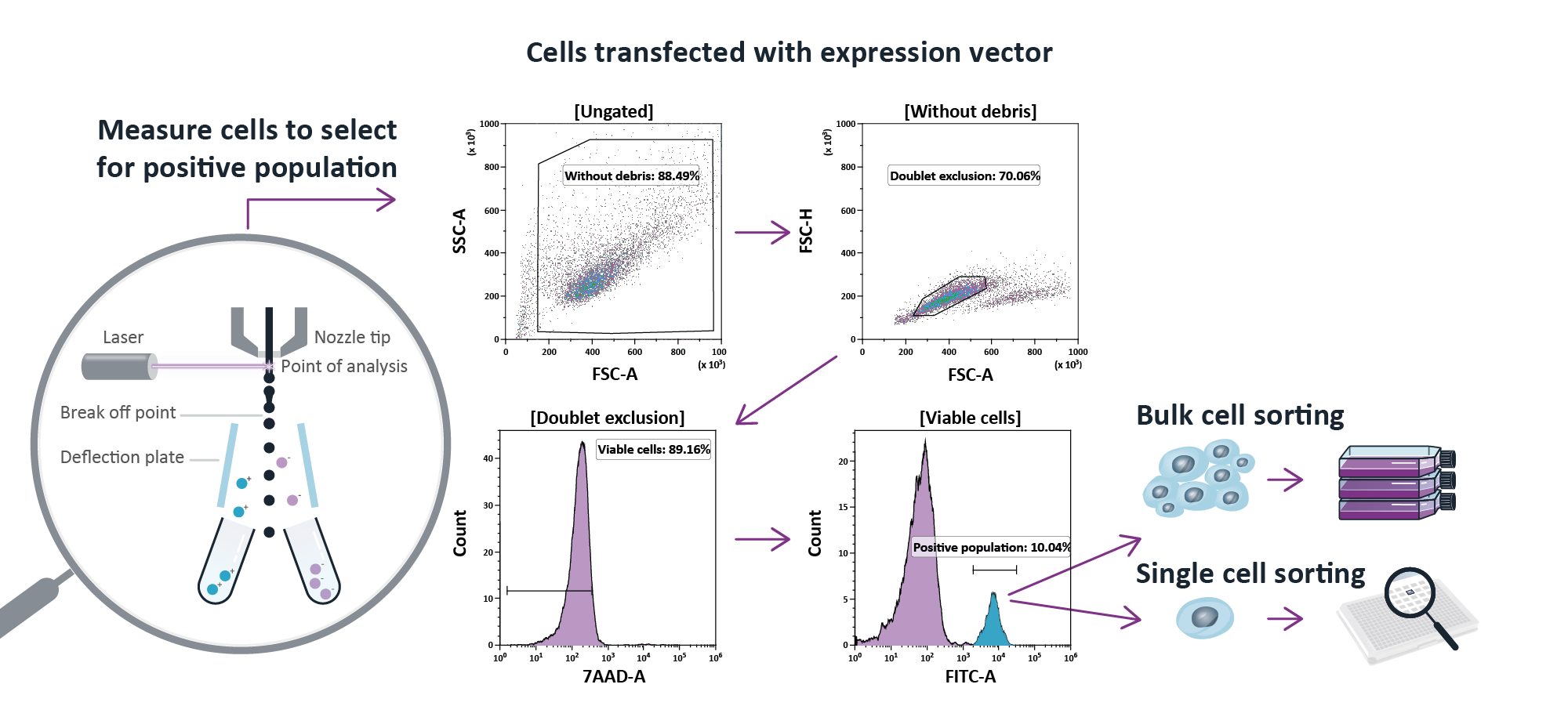Cell Line Generation
Transfection of Cell Lines

Figure 1: Schematic overview of study in which transfected cell line is generated.

Figure 2: Cells with or without expression of the protein of interest will be positively or negatively charged, resp. Deflection plates ensure that the cells with a positive and negative charge are separated. In this example, cells with high expression of a certain receptor can be bulk- or single cell-sorted into tubes or a 96-well plate, resp.
Resistant cell lines
Drug resistance is a major problem in cancer therapy. Many aspects of clinical drug resistance can be studied in drug resistant cell lines generated in vitro. We can test whether your compound can overcome drug resistance as a single agent or in combination with another therapy. Moreover, the mechanisms underlying drug resistance can be studied in drug resistant cell lines.
We offer profiling of compounds in resistant cell lines available at Oncolines, or we can generate cancer cell lines that are resistant against your compound.
Resistant cell lines are generated by exposing cells in culture to gradually increasing doses of your drug of interest (figure 2). Drug resistance is confirmed in viability assays and cell lines can be characterized by DNA sequence analysis. Pathway analysis is performed on RNA sequencing data to determine whether signalling pathways in resistant cell lines are altered in comparison to the parental cell line. Immunoblot analysis is performed to validate expression of target proteins or to determine up- or downregulation of proteins in a specific pathway.



